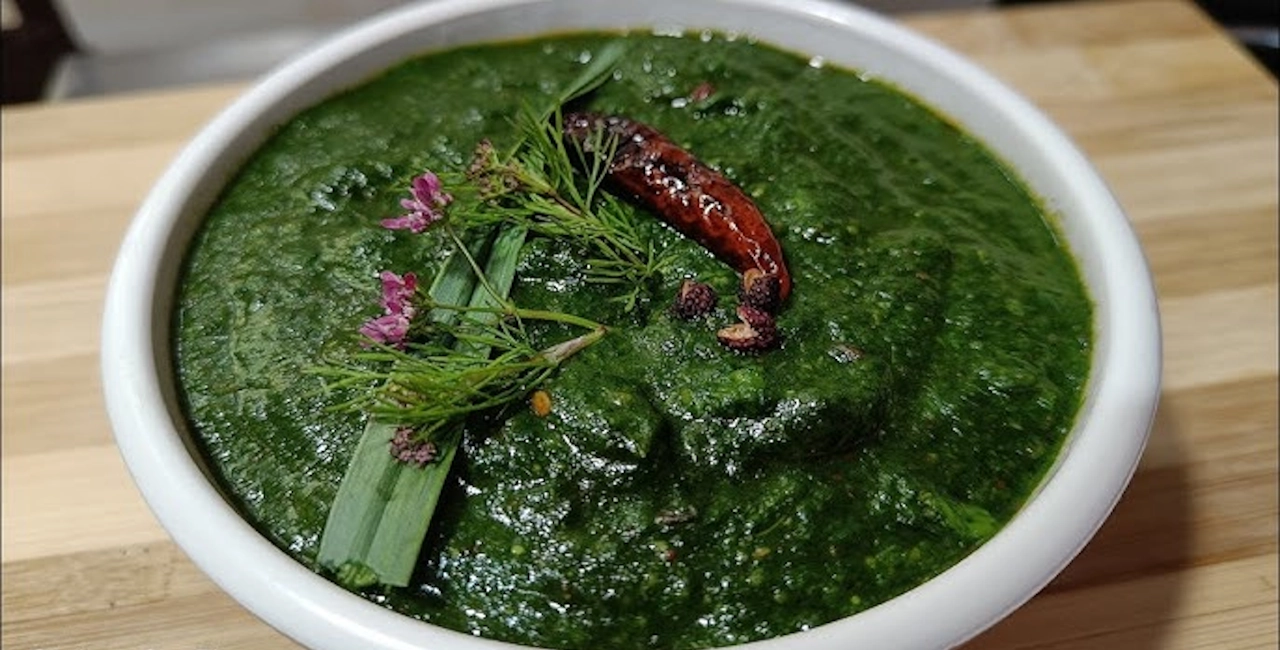Currently Empty: ₹0.00

Kandealee Ka Saag, a traditional Indian dish, is a wonderful representation of regional cuisine and agricultural bounty. Originating from the rural areas of North India, particularly from the states of Uttar Pradesh and Himachal Pradesh, Kandealee Ka Saag is a flavorful and nutritious dish made from the leaves of the Kandealee plant (also known as Amaranth). Known for its rich taste and health benefits, this dish is a staple in many households, cherished for its simplicity and nourishing qualities.
Understanding Kandealee
Kandealee, or Amaranth, is a leafy green plant that has been cultivated and consumed in India for centuries. Its leaves are packed with essential nutrients such as vitamins A, C, and K, as well as minerals like iron, calcium, and potassium. The plant is also a good source of dietary fiber and antioxidants, which contribute to various health benefits, including improved digestion, stronger immunity, and enhanced overall well-being.
In rural regions, Kandealee is often grown in home gardens due to its adaptability to various climatic conditions and soil types. The plant’s tender leaves are harvested for cooking, while the seeds are used in baking or as a nutritious addition to various dishes.
Ingredients and Preparation
To prepare Kandealee Ka Saag, the following ingredients are typically used:
- Kandealee Leaves: Fresh and tender leaves of the Kandealee plant are the primary ingredient. They should be washed thoroughly to remove any dirt or grit.
- Onions: Finely chopped onions add sweetness and depth of flavor to the dish.
- Tomatoes: Chopped tomatoes provide acidity and richness to balance the earthy flavors of the greens.
- Garlic and Ginger: Minced garlic and ginger contribute a pungent and aromatic base to the saag.
- Green Chilies: Slit or chopped green chilies add a touch of heat, which can be adjusted according to personal preference.
- Spices: Common spices used in Kandealee Ka Saag include cumin seeds, turmeric powder, coriander powder, and garam masala. These spices enhance the flavor profile and complement the natural taste of the greens.
- Oil or Ghee: Oil or ghee (clarified butter) is used for sautéing the vegetables and spices.
- Salt and Lemon Juice: Salt is added to taste, and a squeeze of lemon juice at the end brightens up the dish and adds a hint of tanginess.
Cooking Process
- Preparation: Begin by washing the Kandealee leaves thoroughly under running water to ensure they are clean. Drain them and chop them roughly. Finely chop the onions and tomatoes, and mince the garlic and ginger.
- Sautéing: Heat oil or ghee in a pan over medium heat. Add cumin seeds and let them sizzle for a few seconds. Add the minced garlic and ginger, and sauté until they turn golden brown and aromatic. Then, add the chopped onions and cook until they become soft and translucent.
- Tomatoes and Spices: Add the chopped tomatoes to the pan and cook until they break down and blend into the mixture. Incorporate turmeric powder, coriander powder, and green chilies. Cook for a few more minutes, allowing the spices to release their flavors and combine well with the onions and tomatoes.
- Cooking the Greens: Add the chopped Kandealee leaves to the pan. Stir well to combine with the spice mixture. Cover the pan and cook on low heat, allowing the leaves to wilt and cook down. Stir occasionally to ensure even cooking. The leaves will release their moisture, and the dish will thicken as it cooks.
- Finishing Touches: Once the Kandealee leaves are tender and fully cooked, add salt to taste and a sprinkle of garam masala. Mix well and cook for an additional minute or two. Remove from heat and squeeze a bit of lemon juice over the saag for a fresh, tangy flavor.
Serving Suggestions
Kandealee Ka Saag is typically served with traditional Indian bread such as roti, paratha, or even plain rice. It pairs exceptionally well with a dollop of plain yogurt or a side of pickles, which add a tangy contrast to the earthy flavors of the saag. The dish is a comforting and wholesome meal, often enjoyed as a part of a larger spread during family gatherings or festive occasions.
Health Benefits
Kandealee Ka Saag is not just delicious but also highly nutritious. The Kandealee leaves are rich in essential vitamins and minerals, which contribute to overall health. The dish is also relatively low in calories, making it a great option for those looking to maintain a balanced diet. The presence of dietary fiber aids in digestion, while antioxidants help combat oxidative stress and support a healthy immune system.
Conclusion
Kandealee Ka Saag is a delightful and healthful dish that celebrates the simplicity and richness of traditional Indian cuisine. Its preparation reflects the resourcefulness and culinary traditions of rural India, where locally grown ingredients are transformed into nourishing meals. Whether enjoyed as a comforting family meal or as part of a festive spread, Kandealee Ka Saag stands as a testament to the enduring appeal and versatility of regional dishes.Hampi stands as a remarkable testament to the splendor and significance of the Vijayanagara Empire. Its ancient ruins, architectural marvels, and captivating landscapes offer a profound glimpse into a bygone era of prosperity and cultural richness. Whether you are a history enthusiast, an architecture aficionado, or simply someone looking to experience the timeless beauty of this ancient city, Hampi promises an enriching and unforgettable journey through the annals of history.


